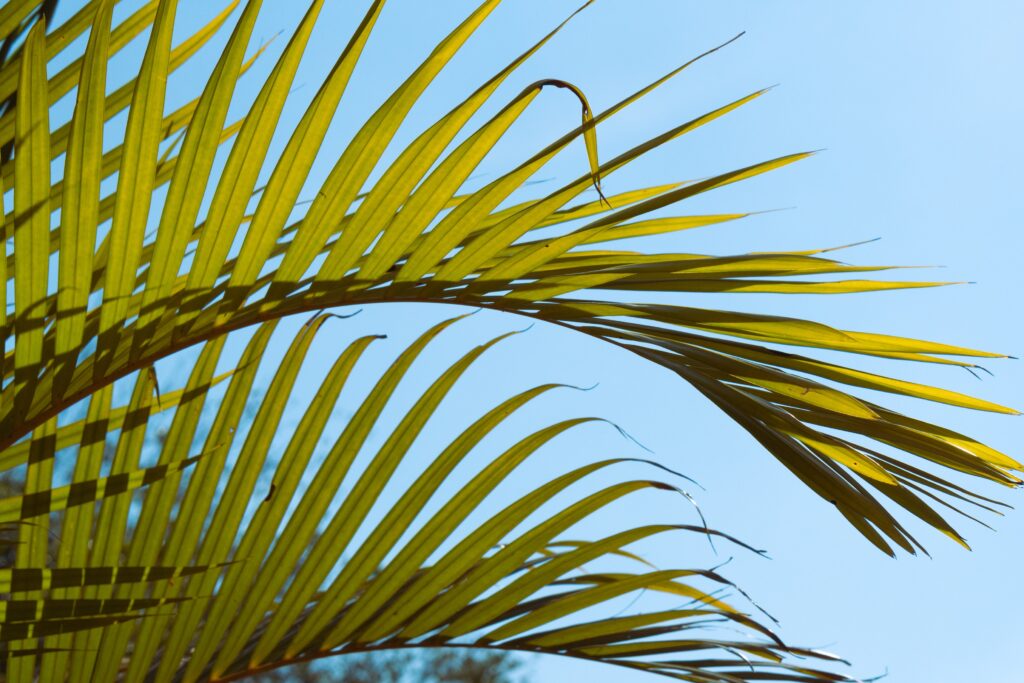Landscape architect Claude Cormier, known for his whimsical and subversive designs, passed away at the age of 63. His playful and unconventional approach to public spaces confused officials while captivating the citizens of Montreal and Toronto. From the Lipstick Forest of bright pink tree trunks to a wedding cake-inspired fountain sliced in half, Cormier’s designs were met with both bureaucratic confusion and public delight. His projects, such as the HTO urban beach and the Pink Balls installation over a predominantly gay neighborhood, brought joy and foot traffic to once-neglected areas. His work challenged traditional notions of gardens and sought to represent the values, culture, and technology of the modern era. Claude Cormier’s legacy is one of pleasure activism and the transformation of public spaces into joyful and welcoming environments.

Introduction
Claude Cormier, Landscape Architect With a Playful Eye, Dies at 63
Claude Cormier, an avant-garde Canadian landscape architect known for his playful and whimsical designs, passed away on September 15, 2023, at the age of 63. His unique and humorous approach to public spaces confused officials and delighted citizens in Montreal and Toronto. Throughout his career, Cormier left a lasting impact on the landscape architecture world, reimagining gardens and urban spaces for the modern era.
Early Life and Education
Birth and Family Background
Claude Cormier was born on June 22, 1960, in Princeville, a rural community in southern Quebec. His father, Laurent, ran the family’s dairy and maple syrup farm, while his mother, Solange Cormier, worked as a teacher. Growing up in a rural setting, Cormier developed an appreciation for nature and the outdoors from an early age.
Academic Journey
Cormier pursued his passion for plants and design by studying agronomy at the University of Guelph in Ontario. After graduating in 1982, he continued his education in landscape architecture at the University of Toronto, earning his degree in 1986. Seeking further knowledge and expertise, Cormier pursued a master’s degree at the Harvard University Graduate School of Design, which he completed in 1994.
Professional Recognition
Throughout his career, Cormier received numerous accolades and recognition for his innovative approach to landscape architecture. In 2009, he was honored as a knight of the Ordre National du Québec, a prestigious civic award. Additionally, a monograph of his work titled “Serious Fun,” written by Marc Treib and Susan Harrington, was published in 2021, highlighting his contributions to the field.

Bureaucratic Confusion and Public Delight
Reactions to Cormier’s Work
Claude Cormier’s designs often elicited mixed reactions, with bureaucratic confusion and public delight being common responses. His unconventional and playful approach challenged traditional notions of public space design, creating unique and memorable experiences for visitors.
Enlivening Montreal and Toronto
Cormier’s work had a significant impact on both Montreal and Toronto, two vibrant cities in Canada. His designs transformed various urban spaces, injecting them with a sense of whimsy and joy. From creating a fanciful Victorian-style fountain in Dorchester Square to designing a dog-themed fountain in Berczy Park, Cormier’s creations became beloved landmarks in these cities.
The Whimsy of Dorchester Square
One of Cormier’s notable projects in Montreal was the redesign of Dorchester Square. To evoke the city’s “belle epoque” period, he envisioned a fanciful Victorian-style fountain that resembled a wedding cake. However, due to space constraints, the fountain was fabricated to appear sliced in half, creating a visually intriguing and playful element.
The Playfulness of Berczy Park
In downtown Toronto, Cormier’s design for Berczy Park showcased his signature playful style. The park features a whimsical fountain surrounded by life-size bronze dogs and one cat, spouting arcs of water. Initially met with skepticism by the park’s board members, who believed dogs were not art, Cormier and his team successfully argued for the inclusion of the canine-themed fountain by highlighting the role of dogs in art throughout history.
Playful Designs in Montreal
Lipstick Forest: Adding Color to Montreal’s Winter
In the late 1990s, Cormier was presented with the challenge of creating a winter garden for Montreal’s convention center. Rejecting the idea of an interior “greenhouse,” he sought to bring color to the city’s bleak winter landscape. His solution was Lipstick Forest, a collection of 52 bright pink lacquered concrete tree trunks. Although initially met with skepticism, the installation became a beloved city landmark, revitalizing the area during the winter months.
The Beloved Pink Balls on Sainte-Catherine Street East
Another example of Cormier’s playful designs in Montreal is the installation of Pink Balls on Sainte-Catherine Street East, a predominantly gay neighborhood. Consisting of 170,000 strands of pink plastic spheres suspended above the street, the installation transformed the area into a vibrant pedestrian mall. The Pink Balls installation, which was initially aimed at revitalizing the neighborhood, became a symbol of joy and inclusivity.

Fanciful Designs in Toronto
The Whimsical Victorian Fountain in Dorchester Square
While Cormier left his mark in Montreal, he also made significant contributions to Toronto’s public spaces. His design for Dorchester Square features a whimsical Victorian-style fountain, tiered like a wedding cake. Despite being fabricated to look sliced in half, the fountain retains its charm and serves as a visual delight for visitors.
The Whimsy of the Dog Fountain in Berczy Park
Cormier’s design for Berczy Park in Toronto showcases his playful approach to public space. The park’s centerpiece is a fountain surrounded by life-size bronze dogs and one cat, spouting arcs of water. Despite initial resistance to the idea that dogs could be considered art, Cormier successfully advocated for their inclusion, creating a unique and interactive element within the park.
Resistance and Victory at Sugar Beach
Cormier’s design for Sugar Beach, a Toronto public park near the Redpath Sugar factory, faced initial resistance due to his choice of pink umbrellas. Critics believed the color was too feminine and frivolous. However, Cormier’s team passionately defended the use of pink and ultimately prevailed. The park, adorned with pink umbrellas, stands as a testament to Cormier’s commitment to adding whimsy and color to urban spaces.
Pink as a Totemic Color
The Symbolic Importance of Pink for Cormier
Pink became a totemic color for Claude Cormier, carrying deep symbolic significance in his designs. For Cormier, pink represented joy, inclusivity, and activism. By incorporating pink elements in his designs, he sought to create spaces that evoked positive emotions and challenged traditional notions.
Pink Balls: Transforming Sainte-Catherine Street East
Cormier’s Pink Balls installation in Montreal’s gay neighborhood of Sainte-Catherine Street East exemplifies his use of pink as a transformative tool. The installation, comprising thousands of pink plastic spheres suspended above the street, revitalized the area and brought foot traffic back to the neighborhood. Simple yet powerful, the Pink Balls installation showcased Cormier’s ability to change the atmosphere of a space through playful design.
Pleasure Activism and Changing Hearts
Claude Cormier’s use of pink in his designs went beyond aesthetics; it was a form of pleasure activism. As a gay man who came of age during the AIDS crisis, Cormier understood the importance of fostering joy and positivity. His designs aimed to change hearts by creating spaces that made people feel good. Through his work, he sought to challenge societal norms and promote inclusivity and happiness.
Claude Cormier’s Legacy
Influences and Inspirations
Claude Cormier drew inspiration from various sources, including his mentor Martha Schwartz, a landscape architect known for integrating contemporary art elements into her work, and Frederick Law Olmsted, the renowned creator of urban landscapes such as Central Park. Cormier’s unique style blended humor, artistry, and a deep understanding of the power of public spaces.
Famous Collaborations and Partnerships
Throughout his career, Cormier collaborated with numerous firms and individuals, further solidifying his impact on the landscape architecture world. One significant collaboration was with gh3*, a Toronto-based firm, on Love Park. This final project exemplified Cormier’s ability to transform an expressway ramp into a beloved urban oasis.
Recognition and Honors
Claude Cormier’s groundbreaking contributions to landscape architecture did not go unnoticed. His innovative designs earned him recognition and honors, including being made a knight of the Ordre National du Québec. Additionally, a monograph of his work, titled “Serious Fun,” highlighted his achievements and influence within the field.
Final Project: Love Park
Collaboration with gh3*
For his final project, Claude Cormier collaborated with gh3*, a prestigious Toronto-based firm. Together, they designed Love Park, situated on the site of a former expressway ramp. This urban oasis features lawns, shade trees, and a heart-shaped pond that is encircled by a low, red-tiled wall designed for sitting.
The Transformation of an Expressway Ramp
Love Park represents a successful transformation of a once undesirable and neglected space. By reimagining the space and infusing it with playful design elements, Cormier and gh3* created a welcoming and enchanting environment for visitors to enjoy.
Design Features of Love Park
Love Park’s design showcases Claude Cormier’s signature whimsical style. The park is adorned with bronze woodland creatures, adding a touch of magic to the surroundings. The heart-shaped pond serves as a focal point and embodies the park’s theme of love and unity. Overall, Love Park stands as a testament to Cormier’s ability to create innovative and imaginative public spaces.
Reimagining Gardens for the Modern Era
Cormier’s Perspective on Gardens
Claude Cormier believed that gardens needed to evolve alongside other forms of artistic expression and design. He questioned the notion of static gardens that remained unchanged for decades and instead aimed to create gardens that embodied contemporary values and culture.
Challenges and Innovations in Garden Design
Cormier faced challenges in reimagining gardens for the modern era. With the rapid advancements in technology, changing societal values, and environmental concerns, he recognized the need for innovation in garden design. He embraced the opportunity to integrate new technologies and materials while also considering the ecological impact of his designs.
Making Gardens Representative of Contemporary Values
As a landscape architect, Cormier aimed to make gardens representative of contemporary values and culture. His designs were not only visually captivating but also intended to evoke emotional responses and create inclusive spaces. By challenging conventions and infusing his designs with whimsy and joy, he succeeded in reimagining gardens for the modern era.
In conclusion, Claude Cormier’s playful and whimsical designs transformed public spaces and gardens in Montreal and Toronto. His unique approach challenged conventions and evoked joy and inclusivity. Through his innovative designs, Cormier left a lasting legacy in the landscape architecture world, reimagining gardens and urban spaces for the modern era.

